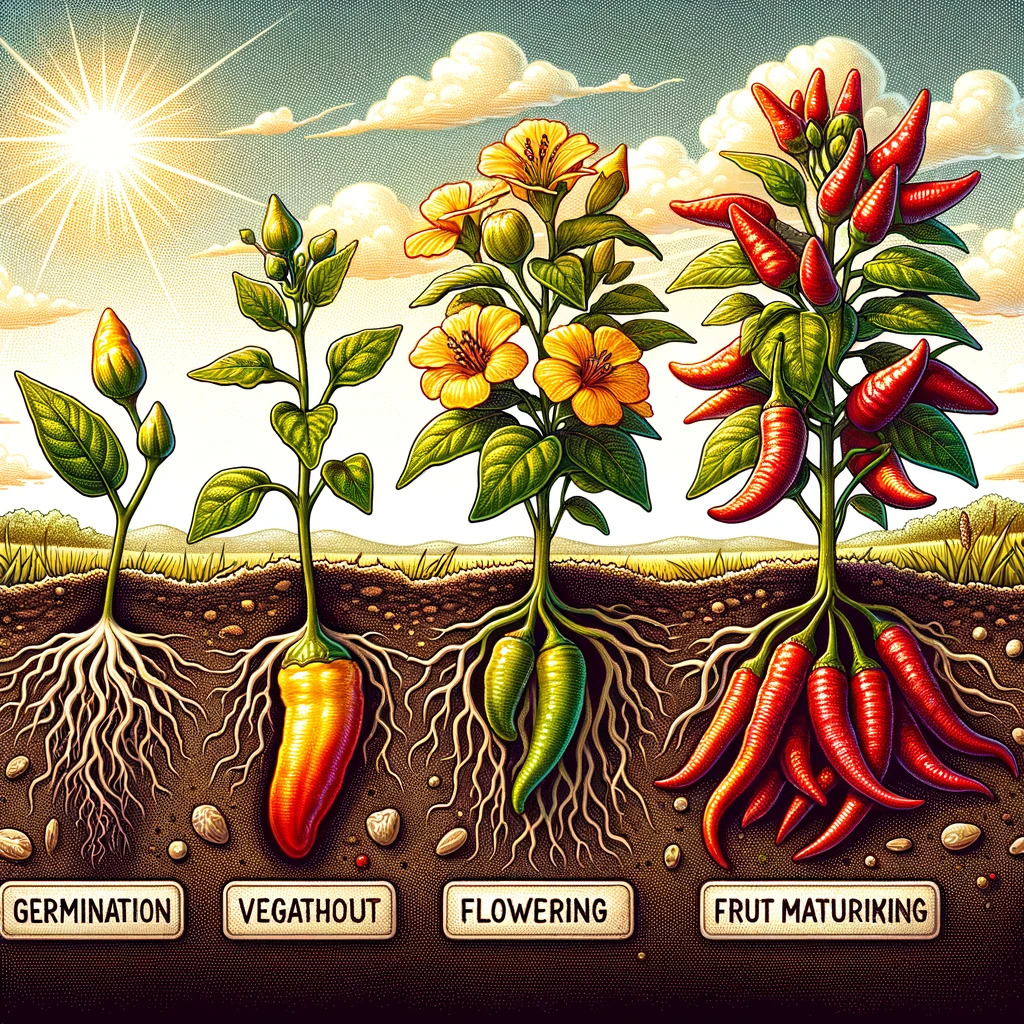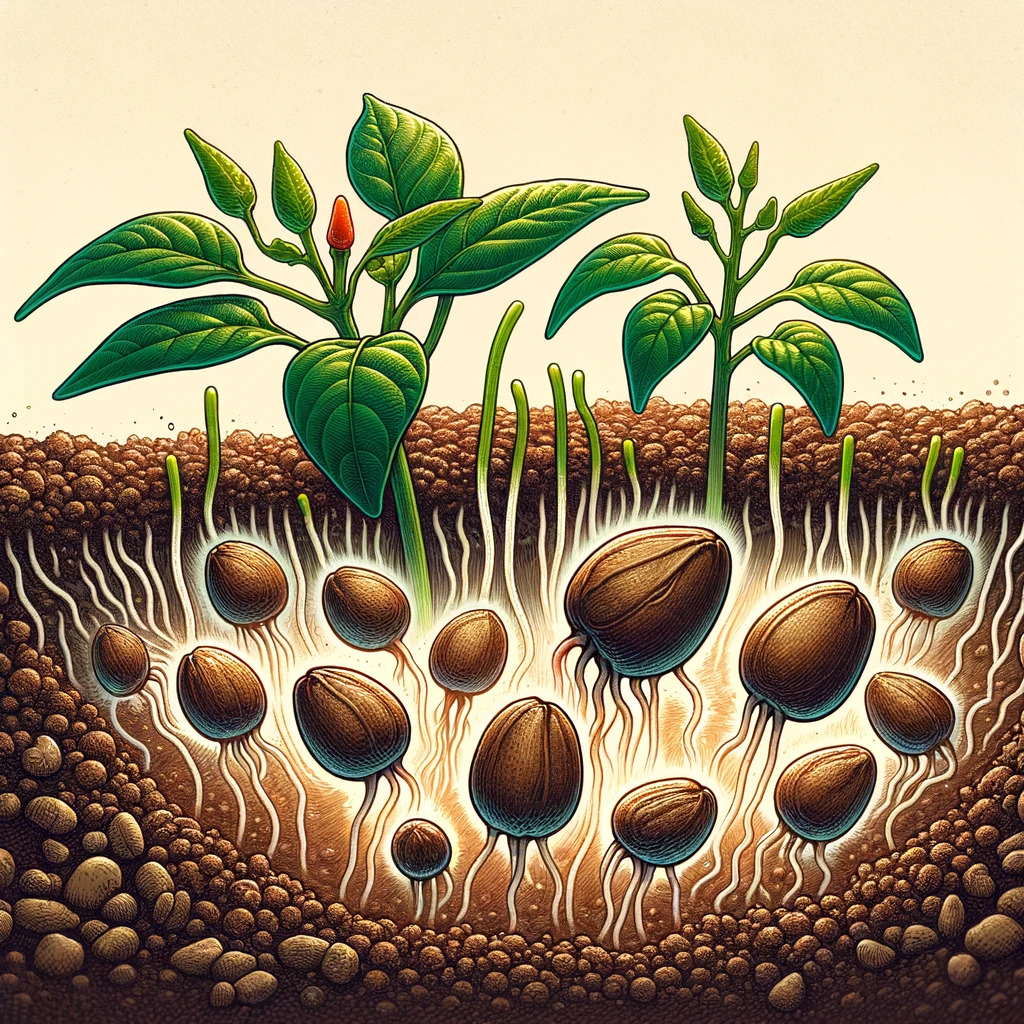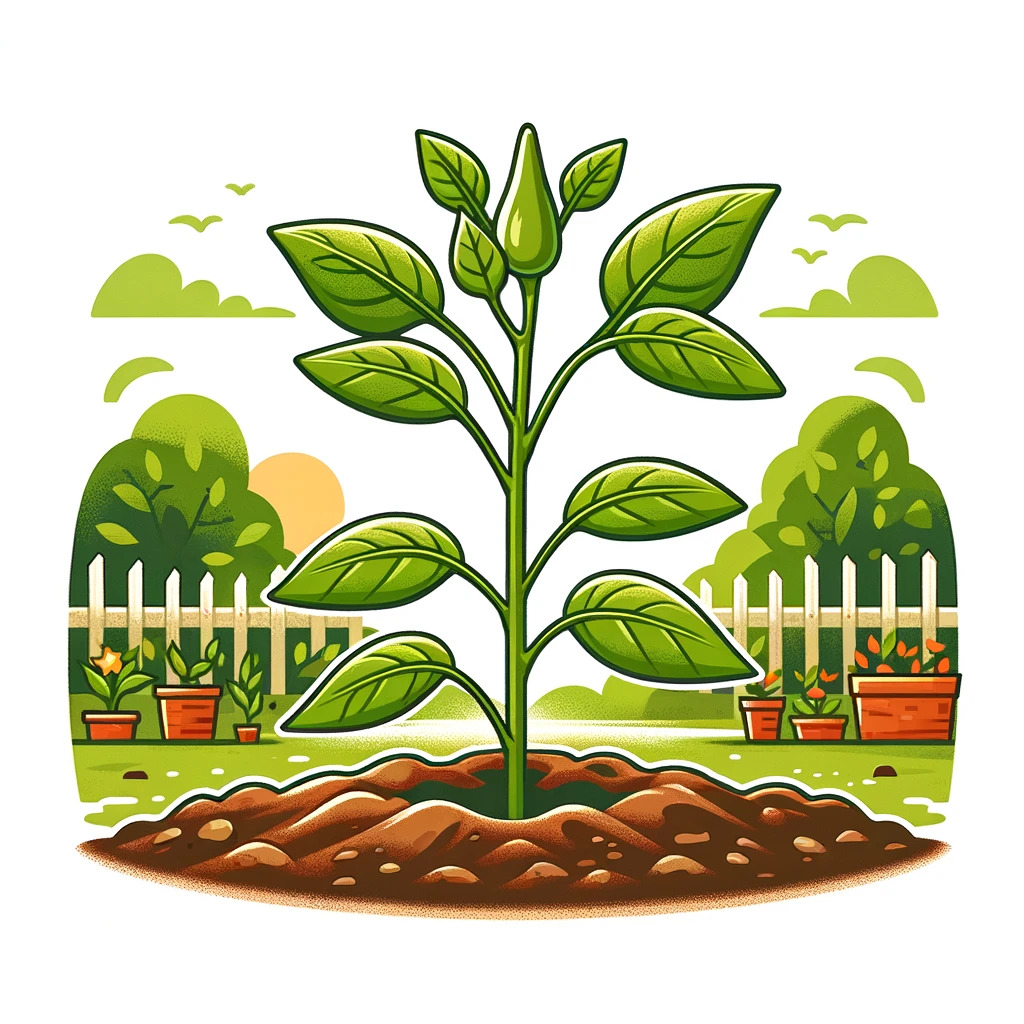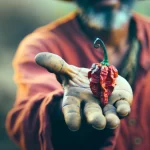
Chili is more than a crop; it’s a cultural legacy in Latin America, especially in Mexico. Knowing its phenological stages is not only essential for a successful harvest but also for keeping alive an agricultural tradition. This article offers a detailed look at each of these stages, providing valuable information to optimize its cultivation.
Germination of Chili
Germination marks the beginning of the chili’s life cycle. In this phase, the quality of the seed and environmental conditions are crucial. Chili seeds require a temperature between 25°C and 30°C for optimal germination. Humidity is equally important; the soil should be moist but not waterlogged, as excess water can cause seed rot. This process lasts approximately 7 to 14 days, depending on the variety and environmental conditions.
For successful germination, it is advisable to use high-quality seeds adapted to the specific region. An effective method to accelerate germination is to hydrate the seeds for 24 hours before planting. Planting should be done at an appropriate depth, generally around 1 to 1.5 cm, to facilitate the emergence of sprouts.

Vegetative Growth
After germination, the plant enters the vegetative growth phase. During this stage, the development of a strong root system and healthy foliage is fundamental. Proper watering and balanced nutrition, providing a balance of nitrogen, phosphorus, and potassium, are essential. Prevention and control of pests and diseases are crucial to protect the young growth.
Pruning and thinning may be necessary to promote more robust growth and better air circulation around the plant. These practices help prevent diseases and improve the plant’s photosynthetic efficiency, crucial for healthy growth.

Flowering
Flowering is a critical stage in the life of chili, where flowers develop and prepare for fruiting. Light and temperature conditions significantly affect this phase. An adequate amount of sunlight and not too high temperatures favor healthy flowering. Pollination is vital during this stage, and can be natural or assisted.
During flowering, it is crucial to continue with proper water and nutrient management, focusing on a balance that favors floral development. Management practices, such as thinning of flowers, may be necessary to ensure that the plant does not produce more fruits than it can sustain.

Fruiting and Maturation
After flowering, the plant enters the fruiting and maturation stage. In this phase, fruits develop from the pollinated flowers. The focus is on maintaining optimal conditions for fruit development, including adequate watering and protection against pests and diseases.
Maturation is the final step, where chilies reach their full size and characteristic color. This is the time to determine the optimal point of harvest, which varies depending on the intended use of the chili (fresh, dried, for sauces, etc.). Timely harvesting ensures maximum quality and flavor of the fruit.

Conclusion
Understanding the phenological stages of chili is essential for any farmer in Latin America. Each stage requires specific attention and care to ensure a successful harvest. We hope this guide helps improve the quality and productivity of your chili cultivation.
 AgronoBlog – Agriculture Blog
AgronoBlog – Agriculture Blog 


